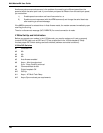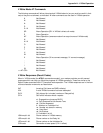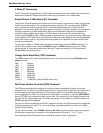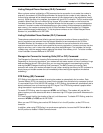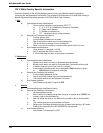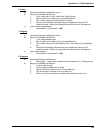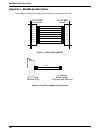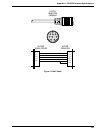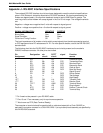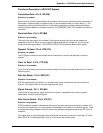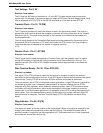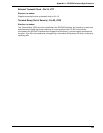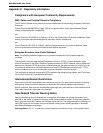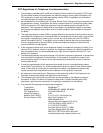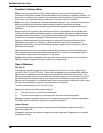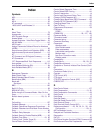
156
MultiModemBA User Guide
Appendix J - RS-232C Interface Specifications
The modem's RS-232C interface circuits have been designed to meet the electrical specifications
given in EIA (Electronic Industries Association) RS-232C standards. All signals generated by the
modem are approximately 10 volts when measured across a load of 3000 ohms or greater. The
receiving circuits of the modem will accept signals in the 3 to 25 volt range. The voltage thresholds
are:
Negative = voltage more negative than 3 volts with respect to signal ground
Positive = voltage more positive than +3 volts with respect to signal ground
SIGNAL INFORMATION: NEGATIVE POSITIVE
Binary State One Zero
Signal Condition Mark Space
Control and Timing Function Off On
The input impedances of all modem circuits which accept signals from the data processing terminal
or CPU equipment have DC resistances of 4.7K. For more specific details, consult the EIA RS-232C
standard itself.
The following chart lists the EIA RS-232C interface pins and circuits present on the modem's
RS232C Interface connector. All other pins are unused.
Pin Designation eia CCITT signal Function
Assignment circuit circuit source
1 PG -- 101 -- Protective Ground
2 SD BA 103 DTE Transmitted Data
3 RD BB 104 DCE Received Data
4 RTS CA 105 DTE Request to Send
5 CTS CB 106 DCE Clear to Send
6 DSR CC 107 DCE Data Set Ready
7 SG AB 102 -- Signal Ground
8 CD CF 109 DCE Carrier Detect
9** +v +v -- DCE Test Voltage
12 HS -- -- DCE High Speed
15*** TC DB 114 DCE Transmit Clock
17*** RC DD 115 DCE Receive Clock
20 TR**** CD 108/2 DTE Terminal Ready
22 RI CE 125 DCE Ring Indicator
24 XTC DA 113 DTE External Transmit Clock
25 OOS CN 142 DTE Terminal Busy
** Pin 9 need not be present in your RS-232C cable
*** Pins 15 and 17 are necessary only for synchronous operation
**** Also known as DTR (Data Terminal Ready)
The computer or terminal should be supplied with a cable terminated with a Cinch DB-25P (or
equivalent) connector mounted in a Cinch DB-51226-1 (or equivalent) hood assembly as specified by
the EIA RS-232C standard.



